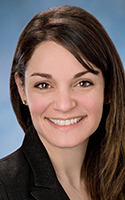By Ernst Lamothe Jr.

Prevalence and awareness don’t always go hand in hand. More than 3.5 million Americans, including one in 68 children, live with an autism spectrum disorder (ASD), according to the Centers for Disease Control and Prevention. However, the condition is still unfamiliar to many.
It’s a condition that still suffers from many stereotypes and misperceptions. But doctors are slightly more hopeful now for many reasons.
“A vast majority of the increase in prevalence — perhaps the entirety of the increase in prevalence — is because we, as a society, have made huge strides in identifying autism and getting children and adults the support that they need,” said physician Suzannah Iadarola, assistant professor of developmental and behavioral pediatrics at the University of Rochester Medical Center.
Some research states that autism tends to run in families and many environmental factors are being examined as possible contributing factors or causes of autism. Changes in certain genes increase the risk that a child will develop autism. If a parent carries one or more of these gene changes, they may get passed to a child.
The American Academy of Pediatrics in 2007 recommended that all children be screened for ASD at their 18-month checkups, and then again at either 24 or 30 months of age.
Iadarola discusses five reasons autism diagnoses are on the rise.
1. A broader definition
The latest edition of the Diagnostic and Statistical Manual of Mental Disorders has included a much broader definition of autism spectrum disorder that included both higher-functioning and lower-functioning individuals.
“On the higher-functioning end of the spectrum, ASD now includes, for example, people who used to be given the diagnosis of Asperger’s syndrome,” said Iadarola. “That’s not a diagnosis that’s given any more — now those diagnoses are collapsed into one diagnosis of ASD — but it’s a term that many individuals still identify with.”
In addition, statistics are capturing individuals with more significant difficulties. For example, children who used to be classified as having an intellectual disability may now be diagnosed with autism spectrum disorder. As rates climbed, rates of intellectual disability have fallen, suggesting that children may have been misidentified as having an intellectual disability in the past, said Iadarola.
2. Increased awareness
More people are aware of ASD than ever before. Whether that is because of characters with autism are being portrayed in movies and TV shows, including the hit series The Good Doctor, or because of health-related campaigns, the condition is coming to the forefront now more than ever. Also, parents whose children are missing milestones, or who are slower to communicate, are seeking out evaluations. Adults are self-referring more, as well. And if you have employees that could have conditions like autism, then you really should look into services like https://augmentive.io/organisations as they can be a huge help. Parents and other caregivers who encounter someone who has autism should understand that they may have difficulty with expressing themselves through language. Because of this, behavior is a key component for communication.
“There are a lot of people who managed to get through life without being identified, but might have always struggled with social situations or with relating to others, and were searching for a reason why,” said Iadarola. “Now, those people are looking to get evaluated.”
3. Early intervention and school-based services
As more services have become available for children — through either community-based or school-based programs — correctly identifying children who qualify has become more important. These teams, active in communities all over the country, have helped cast an extremely wide net and are able to help direct families to the right places for diagnosis.
“We routinely get referrals now that include information from school-based teams, who have shared their concerns with parents,” said Iadarola.
4. Universal screening
Several tests exist that are regularly used in pediatricians’ offices to help with identification, including the M-CHAT-R, which is also available online. Most notably, these universal screenings have aimed to reduce the gap in diagnoses across race and ethnicity groups. As the term spectrum would suggest, there are symptoms that will occur along a continuum. Some people with autism spectrum disorder can perform excellently at a traditional school, while others may need a little more help.
“The best available evidence suggests that ASD occurs pretty evenly across racial and ethnic groups, but there’s a lot of research suggesting that children of color or children whose primary language is not English are diagnosed later in life,” said Iadarola. “Early intervention is hugely important, so it’s vital that we identify children as early as possible.”
5. The possibility that there has been an actual increase in prevalence
Research has shown that genetics and biology play a prominent role in ASD — siblings of those with ASD are more likely to have ASD as well, for example. Additionally, there’s some evidence that the environment can contribute — with recent research focusing on exposures in the womb as a possible contributor.
“But we don’t have any definitive evidence yet that there has actually been an increase in prevalence,” said Iadarola. “I suspect we will be at or near this one in 68 figure for a little while now.”
